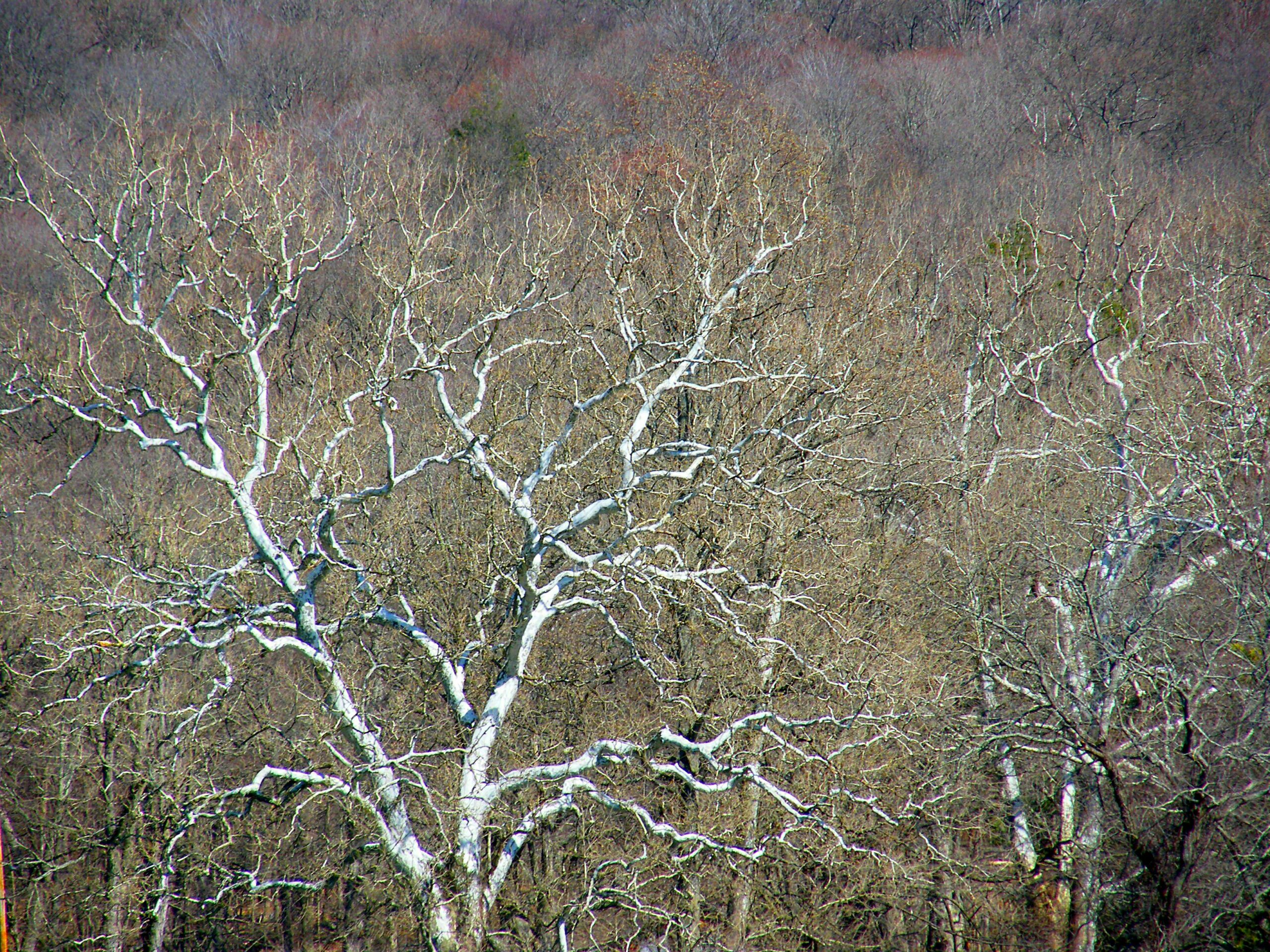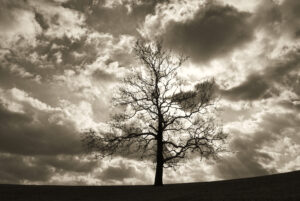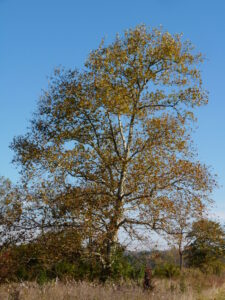American Sycamore
Overview
The American Sycamore, or Platanus occidentalis, stands as a majestic deciduous tree native to eastern North America. Known for its large stature and distinct exfoliating bark, it thrives in wet environments, making it a resilient choice for urban spaces. Beyond providing shade, this tree plays a significant role in supporting wildlife and enhancing biodiversity, despite its vulnerability to certain pests.

Characteristics
Known for its towering height, broad canopy, and distinctive exfoliating bark.
Region
Eastern and central United States, northeastern Mexico, southern Ontario, and southern Quebec.
Natural Habitat
American Sycamore is commonly found in bottomland or floodplain areas near rivers and streams.
Cultivation
Thrives in full sun, prefers moist, well-drained soils but adapts to varying conditions, including clay, loam, and sandy soils.
Uses and Benefits
The majestic American Sycamore is not just a pretty face in the landscape; it’s a tree that offers a wealth of practical and ecological benefits. If you’re looking for a natural way to beat the heat on sunny days, look no further than the broad, leafy branches of the American Sycamore. This tree provides ample shade, making it the perfect choice for parks, yards, and other outdoor spaces2.
But the American Sycamore isn’t just a one-trick pony. Its robust structure allows it to endure tough conditions, showcasing its resilience and adaptability3. Whether faced with urban pollution or natural challenges, this tree stands tall and strong, making it a reliable addition to any environment.
The benefits of the American Sycamore extend far beyond its shade-giving abilities. This tree plays a vital role in supporting the local ecosystem by:
- Providing shelter for a diverse array of birds and animals
- Offering sustenance to wildlife in the form of seeds, leaves, and bark
- Contributing to the overall environmental diversity and balance of the area2
While the American Sycamore may not be traditionally used for herbal remedies, its presence alone is a testament to the importance of preserving and promoting native species. By incorporating this tree into your landscaping or wildcrafting efforts, you’re not only enhancing the aesthetic appeal of your space but also supporting the delicate balance of nature.

Cultivation Tips
To grow an American Sycamore tree successfully, you’ll want to echo its natural love for moisture. Planting it in an area that can stay well-hydrated, akin to its preferred floodplain spots, will make for a happy tree3. Choose a location with full sun exposure and deep, rich soil to bolster its growth.
While the American Sycamore is known for its resilience against pollution and varying weather conditions, providing it with the right environment will ensure optimal growth. Keep these factors in mind when selecting a planting site:
- Ample space to accommodate the tree’s large size at maturity
- Consistent moisture in the soil
- Full sun exposure for at least 6 hours a day
- Deep, rich soil to support its expansive root system
By meeting these requirements, you’ll set the stage for your American Sycamore to thrive and reach its impressive height. With proper care and attention, this mighty tree will be a long-lasting addition to your landscape.
Seasonal Considerations
When choosing the perfect spot to plant your American Sycamore, it’s crucial to consider its seasonal needs. This majestic tree thrives in consistently moist soil, so aim to mimic its natural habitat by selecting a site that can provide ample hydration throughout the year, such as a low-lying area or near a water source3.
While the American Sycamore is a resilient tree that can withstand various environmental challenges, providing it with full sun exposure and rich, deep soil will encourage optimal growth and health. Keep in mind that this tree is destined to reach impressive heights, so it’s essential to choose a planting location that allows ample space for its expansive canopy and towering presence.
To ensure your American Sycamore flourishes through the seasons, consider the following:
- In spring, maintain consistent soil moisture and mulch around the tree’s base to retain water and suppress weed growth.
- During the summer months, provide deep, infrequent watering to encourage deep root development and drought resistance.
- As autumn arrives, continue to water your tree until the ground freezes, and apply a fresh layer of mulch to protect the roots from winter cold.
- In winter, monitor your tree for signs of damage from heavy snow or ice, and prune away any broken or diseased branches to maintain its structural integrity.
By taking these seasonal considerations into account, you’ll create an ideal environment for your American Sycamore to thrive, ensuring a stunning and long-lasting addition to your landscape.

Issues and Troubleshooting
In nurturing the majestic American Sycamore, it’s important to keep an eye out for pests that find this tree as charming as we do. The sycamore leaf beetle and pesky aphids can often be unwelcome guests, nibbling on the tree’s foliage and potentially affecting its health3 4. Another visitor to be mindful of is the sycamore tussock moth, which enjoys making a home within its branches3.
To troubleshoot these common issues:
- Regularly inspect your sycamore for signs of pest activity, such as damaged leaves or the presence of insects
- If you spot sycamore leaf beetles or aphids, consider using a gentle, eco-friendly insecticide or introducing beneficial predators like ladybugs to help control their population
- For sycamore tussock moths, remove any egg masses or caterpillars you find and dispose of them safely
- Maintain your tree’s overall health by providing adequate water, nutrients, and pruning when necessary, as a strong tree is better equipped to handle pest pressures
By staying vigilant and addressing any issues promptly, you can ensure your American Sycamore continues to thrive, its grand canopy stretching proudly skyward. Remember, a little bit of prevention and care goes a long way in keeping your leafy friend healthy and happy!
History and Folklore
Steeped in lore, the American Sycamore is more than just the largest deciduous tree in North America. It holds a special place in the history and hearts of the landscapes it graces. Often referred to as the Buttonwood, this tree has played a significant role in the lives of Native Americans and the development of modern society.
The strong and resilient wood of the American Sycamore was highly valued by Native American tribes. They skillfully crafted bowls, drums, and pipes from its sturdy timber, weaving the tree’s essence into their daily lives and cultural practices. The Sycamore’s presence in these sacred objects speaks to the deep connection between the tree and the indigenous peoples of North America.
In more recent history, the American Sycamore has left its mark on the financial world. The Buttonwood Agreement of 1792, a pivotal moment that led to the founding of the New York Stock Exchange, is said to have been signed beneath the shade of a Sycamore tree1. This event forever tied the tree to the birth of modern finance, cementing its place in American history.
The American Sycamore’s unique, exfoliating bark reveals a smooth, white inner layer, a sight that has captured the imagination of many. In Native American folklore, this characteristic symbolizes renewal and strength, with tales often depicting the tree as a resilient guardian of the forest. These stories, passed down through generations, speak to the enduring spirit of the American Sycamore and its ability to withstand the tests of time.
Though the specific myths and legends surrounding this mighty tree remain elusive, whispered through the leaves of time, the American Sycamore’s presence in the collective consciousness of the nation is undeniable. Its silent witness to history and its unwavering strength continue to inspire and captivate those who encounter its majestic presence.
References
1. American Sycamore (Platanus occidentalis) – Gardenia, https://www.gardenia.net/plant/platanus-occidentalis
2. American Sycamore Tree Facts – PlantingTree, https://www.plantingtree.com/blogs/gardening/american-sycamore-tree-facts
3. Platanus occidentalis – Wikipedia, https://en.wikipedia.org/wiki/Platanus_occidentalis
4. How to Grow and Care for a Sycamore Tree – The Spruce, https://www.thespruce.com/sycamore-tree-guide-5195579
5. Sycamore – US Forest Service Research and Development, https://www.srs.fs.usda.gov/pubs/misc/ag_654/volume_2/platanus/occidentalis.htm
Image Credit: Stanley Zimny (Thank You for 70 Million views) Attribution-NonCommercial License
Image Credit: jolynne_martinez Attribution-NonCommercial-NoDerivs License
Image Credit: Dendroica cerulea Attribution-NonCommercial-ShareAlike License
Nicolas Duval
Nicolas is a passionate advocate for nature and the art of wildcrafting. His dedication shines through in Wildcraftia, a website he meticulously crafted to serve as a haven for nature enthusiasts worldwide. Driven by a deep appreciation for nature’s connection to humanity, Nicolas embarked on his journey in 2011 with SmokableHerbs, a platform showcasing his love for nature’s bounty. Building upon this foundation, he established Smokably, a thriving online store offering premium herbs and blends to a global audience.
